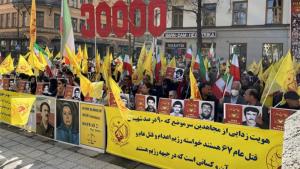MEK lawyer’s closing arguments in trial of Hamid Noury
May 11, 2022Human Rights - Social Gov originally published at Human Rights - Social Gov
On Monday, May 2, Kenneth Lewis, the lawyer of plaintiffs from the People’s Mojahedin Organization of Iran (PMOI/MEK) in the Hamid Noury’s case one of the perpetrators of the 1988 massacre presented his closing arguments in a Stockholm, Sweden court.
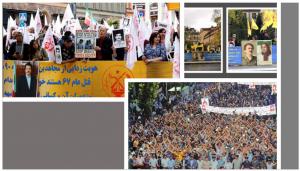
Kenneth Lewis provided a historical background regarding the June 20, 1981, demonstration in Tehran as half a million people poured into the streets and were gunned down by the regime’s Revolutionary Guards (IRGC).
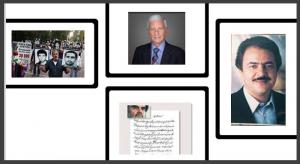
Kenneth Lewis provided details of the mullahs’ crimes against PMOI/MEK members and supporters across the globe, making it crystal clear that this regime considers the PMOI/MEK as its main enemy historically, politically, and ideologically.
During the court proceedings, Noury denied the 1988 massacre as well as his presence in Gohardasht prison against all the presented evidence.
— MEK
PARIS, FRANCE, May 8, 2022 /EINPresswire.com/ — On Monday, May 2, Kenneth Lewis, the lawyer of plaintiffs from the People’s Mojahedin Organization of Iran (PMOI/MEK) in the Hamid Noury case, presented his closing arguments in a Stockholm, Sweden, court where Noury, one of the perpetrators of the 1988 massacre of Iranian political prisoners, is being tried for crimes against humanity.
In the court session, Lewis confirmed the arguments made by the prosecutors and other attorneys of the plaintiffs pertaining to Noury being guilty of crimes in 1988.
He also presented new aspects of the case to the court. He first gave a brief history of the PMOI/MEK and its struggle against the Shah dictatorship and in defense of freedom in Iran.
Lewis then described the 1979 Revolution era and the mullahs’ rise to power, after which the new regime started suppressing women, ethnic and religious minorities, and political parties.
Lewis said that Ruhollah Khomeini, the first supreme leader of the mullahs’ regime, ordered the arrest and killing of PMOI/MEK members and supporters in the early years after the revolution.
Kenneth Lewis provided a historical background regarding the June 20, 1981, demonstration in Tehran as half a million people poured into the streets and were gunned down by the regime’s Revolutionary Guards (IRGC).
Following the execution of a number of young PMOI/MEK members after the demonstration, regime authorities published a number of these victims’ pictures in state newspapers and called on anyone who can identify them to the regime’s public prosecutor’s office.
Lewis provided details of the mullahs’ crimes against PMOI/MEK members and supporters across the globe, making it crystal clear that this regime considers the PMOI/MEK as its main enemy historically, politically, and ideologically.
The regime ruling Iran is determined to completely annihilate the PMOI/MEK, and the arrests, tortures, and executions are based on a policy adopted from the time Khomeini came into power, continued through his 1988 fatwa, and sustained as we speak.
During the 1988 massacre of political prisoners, Noury was one of the prison authorities in Gohardasht prison, Karaj.
During the court proceedings, Noury denied the 1988 massacre as well as his presence in Gohardasht prison against all the presented evidence.
He tried to frame the killing of thousands of prisoners as “lies and propaganda by the MEK and communists.” He tried to portray himself as a minor actor who did not take part in the executions.
But numerous witnesses who testified in the Swedish court gave harrowing accounts of how Noury and other regime authorities sent prisoners to the gallows by the dozens simply for refusing to retract their support for the (PMOI/MEK). At the time, some 30,000 prisoners were executed across Iran in a few months.
The witnesses also testified on the prominent role that regime president Ebrahim Raisi played in prosecuting the prisoners in minutes-long trials without access to lawyers and immediately sending them to the execution hall.
“The current regime ruling Iran has executed hundreds of thousands of PMOI/MEK members and supporters for their religious and political beliefs.
The PMOI/MEK have published the names and specifications of around 20,000 of these victims. Many have referred to this book several times.
There are other members of the PMOI/MEK and the National Council of Resistance of Iran who were killed abroad, in Switzerland, Italy, Turkey, Pakistan, and Iraq. 141 PMOI/MEK members were killed in Iraq alone,” Lewis explained.
“There is no doubt that from the 1980s onward the vast majority of Iran’s population have been oppressed by the mullahs’ regime, and this includes supporters of the PMOI/MEK.
They were mostly arrested and condemned in 1981 and 1982 for their religious and political beliefs, distributing newspapers, participating in demonstrations, collecting money for their organization,” Lewis added.
“There are countless reports that these arrested political prisoners were not only assaulted but also tortured. We have heard extensively about whippings to the feet and other types of torture.
This included mock executions and gas chambers described by our witnesses and plaintiffs. Some were even forced to witness the executions of others, and women were raped. There are horrific images that show the traces left on the feet of those who suffered the lashings.
There were no international courts, they had no lawyers, and they had no opportunity to object or request an appeal. There were no requests for appeals and/or objectives, despite the fact that Raisi and other regime officials claimed they received due process. There was no such a thing,” Lewis explained.
The PMOI/MEK lawyer continued his closing arguments with more explanations on the 1988 massacre, reading out segments of the telegraph sent by Iranian Resistance leader Massoud Rajavi to the then United Nations Secretary-General in September of 1988 regarding the massacre of thousands of political prisoners based on orders issued by Khomeini.
Lewis provided details regarding Khomeini’s orders launching the massacre of PMOI/MEK members who were steadfast in their political beliefs.
“The grounds for the massacre were placed through Khomeini’s orders, called a fatwa. In this text, Khomeini dubbed the PMOI/MEK as ‘enemies of God’ who must all be executed,” Lewis explained, continuing his remarks with a brief description of the number of female PMOI/MEK members in prisons across Iran.
In Gohardasht prison, located in Karaj, west of Tehran, all-female PMOI/MEK members were executed during the 1988 massacre.
In the final segment of his closing arguments, Kenneth Lewis delivered strong evidence proving that the killings and massacre of political prisoners, especially the genocide against the PMOI/MEK, was planned months prior to the PMOI/MEK’s August 1988 “Operation Eternal Light,” and that Khomeini’s order was already issued.
Lewis also referred to Hamid Noury’s direct role in the executions and torture of political prisoners and even the assaulting of female PMOI/MEK members in Gohardasht prison. Finally, Lewis approved the Swedish prosecutors’ request for life imprisonment for Hamid Noury.
“I want to see Hamid Noury condemned as the assailant and criminal based on the indictment. He was not a non-important figure. He was actually an essential figure who had a significant role in the executions, and we know that he was fully aware of what he was doing at the time,” Lewis concluded.
Shahin Gobadi
NCRI
+33 6 61 65 32 31
email us here
Parvin Pouregbal is among the few survivors of the summer 1988 massacre. she says political prisoners were executed. Prisons were emptied after the massacre.
![]()
Human Rights - Social Gov originally published at Human Rights - Social Gov
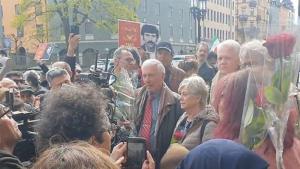
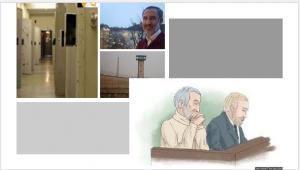

 ,
,